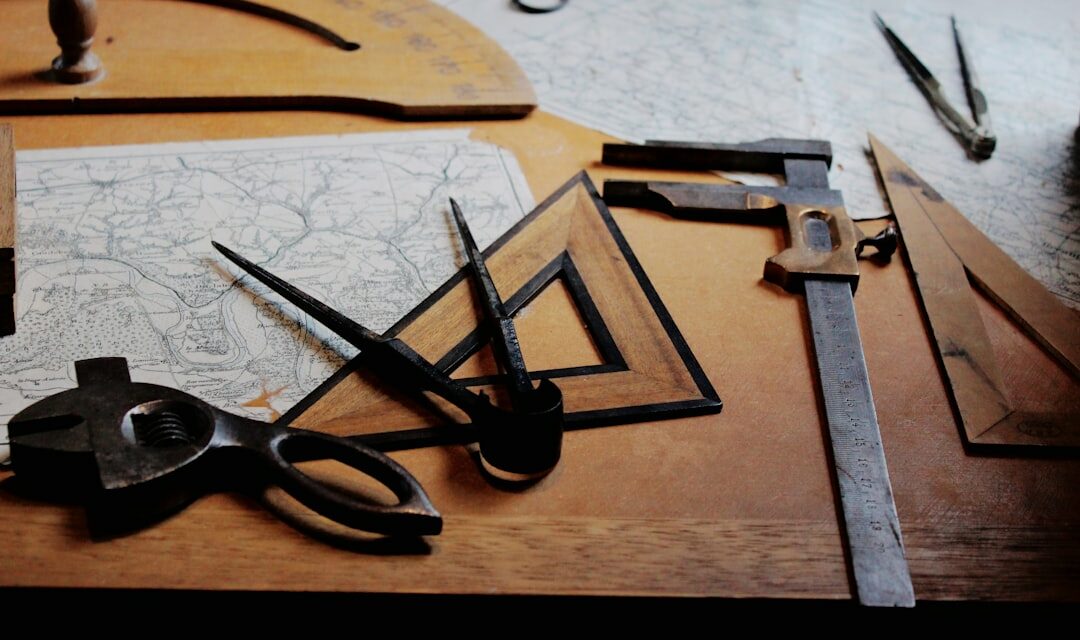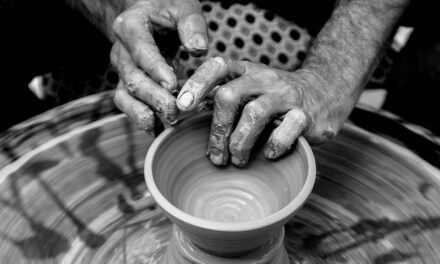Burnishing is a technique employed in various artistic and craft disciplines, characterised by the smoothing and polishing of surfaces to achieve a lustrous finish. This process involves rubbing a hard, smooth tool against a material, typically paper, leather, or metal, to compress the surface fibres or particles. The result is a shiny, reflective surface that enhances the visual appeal of the work.
Burnishing can be used to create depth and texture in artworks, as well as to prepare surfaces for further embellishment or protection. The technique is not only aesthetic but also functional, as it can strengthen the material by compacting its structure. The origins of burnishing can be traced back to ancient practices where artisans sought to improve the durability and appearance of their creations.
In contemporary contexts, burnishing is often associated with printmaking, bookbinding, and leatherwork, where it serves both decorative and practical purposes. The method can vary significantly depending on the medium used; for instance, burnishing on paper may involve different tools and techniques compared to leather or metal. Regardless of the material, the fundamental principle remains the same: to create a smooth, polished surface that enhances the overall quality of the work.
Summary
- Burnishing is a technique used to polish and smooth the surface of a material, such as metal, leather, or paper, using pressure and friction.
- The history of burnishing dates back to ancient times, with evidence of its use in various cultures around the world.
- Tools and materials for burnishing include burnishing tools, such as bone folders and agate burnishers, as well as materials like metal leaf, leather, and paper.
- Techniques for burnishing vary depending on the material being worked on, but generally involve applying pressure and friction to achieve a smooth, polished surface.
- Different types of burnishing include metal burnishing, leather burnishing, and paper burnishing, each with its own specific tools and techniques.
History of Burnishing
The history of burnishing is rich and varied, with evidence of its use dating back thousands of years. Archaeological findings suggest that ancient civilisations, such as the Egyptians and Mesopotamians, employed burnishing techniques in pottery and metalwork to enhance the aesthetic qualities of their creations. These early artisans recognised that by polishing surfaces, they could not only improve the visual appeal but also increase the durability of their objects.
As cultures evolved, so too did the methods and tools used for burnishing, leading to a diverse array of practices across different regions and time periods. During the Middle Ages, burnishing became an integral part of manuscript illumination and bookbinding. Scribes and illuminators used burnishing tools to create glossy finishes on gold leaf and other decorative elements, adding a sense of opulence to their works.
The Renaissance period saw a resurgence in the use of burnishing techniques as artists sought to achieve greater realism and depth in their paintings. This historical context highlights how burnishing has been a vital component in the evolution of artistic practices, reflecting broader cultural trends and technological advancements throughout history.
Tools and Materials for Burnishing

The tools and materials used for burnishing can vary widely depending on the specific application and medium involved. In printmaking, for instance, artists often utilise a variety of burnishing tools such as wooden spoons, baren (a Japanese tool), or even specially designed metal burnishers. These tools are crafted to provide a smooth surface that can effectively compress the paper against the inked plate, ensuring a clean transfer of image.
The choice of tool can significantly influence the final outcome; for example, a softer tool may yield a more subtle finish, while a harder tool can produce a sharper contrast. In addition to tools, the materials being burnished play a crucial role in determining the technique’s effectiveness. For paper burnishing, artists typically use high-quality papers that can withstand pressure without tearing or warping.
In leatherwork, vegetable-tanned leather is often preferred due to its ability to absorb moisture and respond well to heat generated during the burnishing process. Similarly, when working with metals, artists may choose specific alloys that lend themselves well to polishing. Understanding the interplay between tools and materials is essential for achieving optimal results in any burnishing project.
Techniques for Burnishing
There are several techniques employed in burnishing that cater to different materials and desired outcomes. One common method involves applying pressure in a circular motion with a burnishing tool on the surface of the material. This technique is particularly effective for paper and leather, as it allows for even distribution of pressure while gradually building up a polished finish.
Artists may also incorporate heat into their burnishing process; for instance, using a heated tool can enhance the effectiveness of the technique by softening the material slightly, making it more receptive to compression. Another technique involves layering multiple applications of colour or texture before burnishing. In printmaking, artists may apply various inks or paints to create depth before using a burnisher to smooth out the surface.
This approach not only enhances the visual complexity of the work but also allows for greater control over the final appearance. Additionally, some artists experiment with different angles and pressures during burnishing to achieve unique effects, demonstrating that this seemingly simple technique can yield a wide range of artistic possibilities.
Different Types of Burnishing
Burnishing can be categorised into several distinct types based on the materials used and the desired effects. One prominent type is paper burnishing, which is commonly utilised in printmaking and drawing. This method focuses on creating smooth surfaces on paper through various tools and techniques, allowing artists to achieve intricate details in their work.
Another type is leather burnishing, which involves compressing the edges of cut leather pieces to create a polished finish that not only enhances aesthetics but also prevents fraying. Metal burnishing is yet another variation that involves polishing metal surfaces to achieve a reflective sheen. This technique is often employed in jewellery making and metal sculpture, where artisans seek to highlight intricate designs or textures.
Each type of burnishing requires specific tools and approaches tailored to the unique properties of the material involved. By understanding these distinctions, artists can select the most appropriate methods for their projects, ensuring that they achieve their desired outcomes effectively.
Benefits of Burnishing

The benefits of burnishing extend beyond mere aesthetics; this technique offers numerous advantages across various artistic disciplines. One significant benefit is the enhancement of durability in materials. By compressing fibres or particles during the burnishing process, artists can create surfaces that are less prone to wear and tear over time.
This is particularly important in crafts such as bookbinding or leatherwork, where longevity is essential for preserving the integrity of the finished product. In addition to durability, burnishing also contributes to improved visual quality. The polished surfaces created through this technique reflect light in ways that can dramatically alter the perception of colour and texture within an artwork.
This effect can add depth and dimension to pieces, making them more engaging for viewers. Furthermore, burnished surfaces often feel smoother to the touch, enhancing the tactile experience for those who interact with the work. Overall, burnishing serves as a valuable tool for artists seeking to elevate both the functional and aesthetic qualities of their creations.
Burnishing in Different Art Forms
Burnishing finds its application across a diverse range of art forms, each utilising this technique in unique ways to enhance their respective mediums. In printmaking, for example, artists employ burnishing to transfer ink from plates onto paper effectively. This process not only ensures crisp lines and vibrant colours but also allows for intricate details that might otherwise be lost during printing.
The careful application of pressure during burnishing can significantly impact the final print’s quality, making it an essential step in many printmaking processes. In leatherwork, burnishing plays a crucial role in finishing edges and seams. Artisans use this technique to create smooth transitions between different parts of a leather piece, enhancing both its appearance and functionality.
The polished edges not only look more professional but also help prevent fraying and damage over time. Similarly, in ceramics, artists may use burnishing techniques on clay surfaces before firing to achieve a glossy finish that highlights textures and patterns within their work. Each art form adapts burnishing methods to suit its specific needs while benefiting from the inherent advantages this technique provides.
Tips for Beginners in Burnishing
For those new to burnishing, there are several tips that can help ensure success in mastering this technique. First and foremost, it is essential to choose high-quality materials suited for your specific project. Whether working with paper, leather, or metal, investing in good-quality materials will yield better results and make the process more enjoyable overall.
Additionally, familiarising oneself with various tools available for burnishing can greatly enhance one’s ability to achieve desired effects; experimenting with different tools will help beginners discover what works best for them. Another important tip is to practice patience during the burnishing process. Rushing through this technique can lead to uneven surfaces or damage to materials; taking time to apply consistent pressure will yield smoother finishes and better overall results.
Beginners should also consider starting with smaller projects before tackling larger ones; this allows for experimentation without overwhelming oneself with complexity. By following these guidelines and embracing a spirit of exploration, newcomers can develop their skills in burnishing while enjoying the creative journey it offers.
If you’re intrigued by the art technique of burnishing and wish to explore more about foundational art techniques and their historical contexts, you might find the article An Introduction to the Artist Leonardo da Vinci particularly enlightening. Leonardo da Vinci, a master of the Renaissance period, often employed various sophisticated techniques in his artworks, which have inspired countless artists to adopt and adapt these methods in their own work. Understanding his approach can provide deeper insights into the evolution of artistic techniques, including burnishing.




